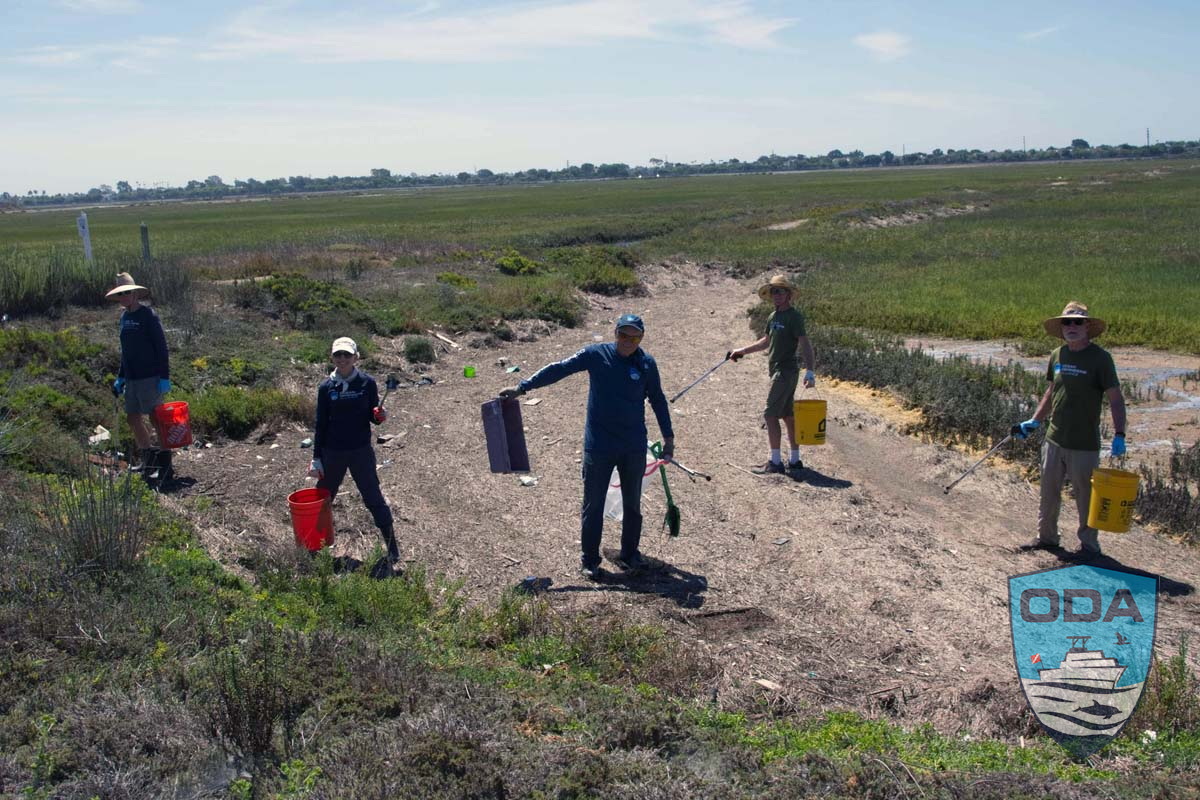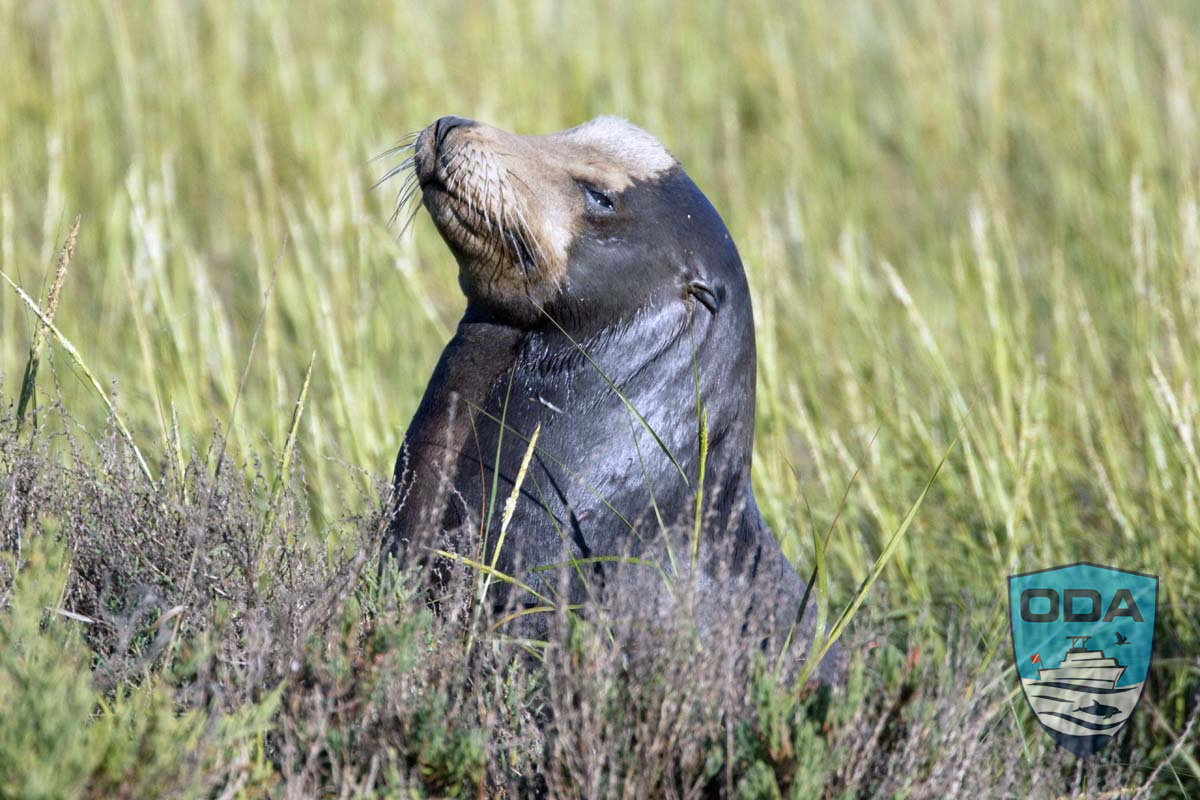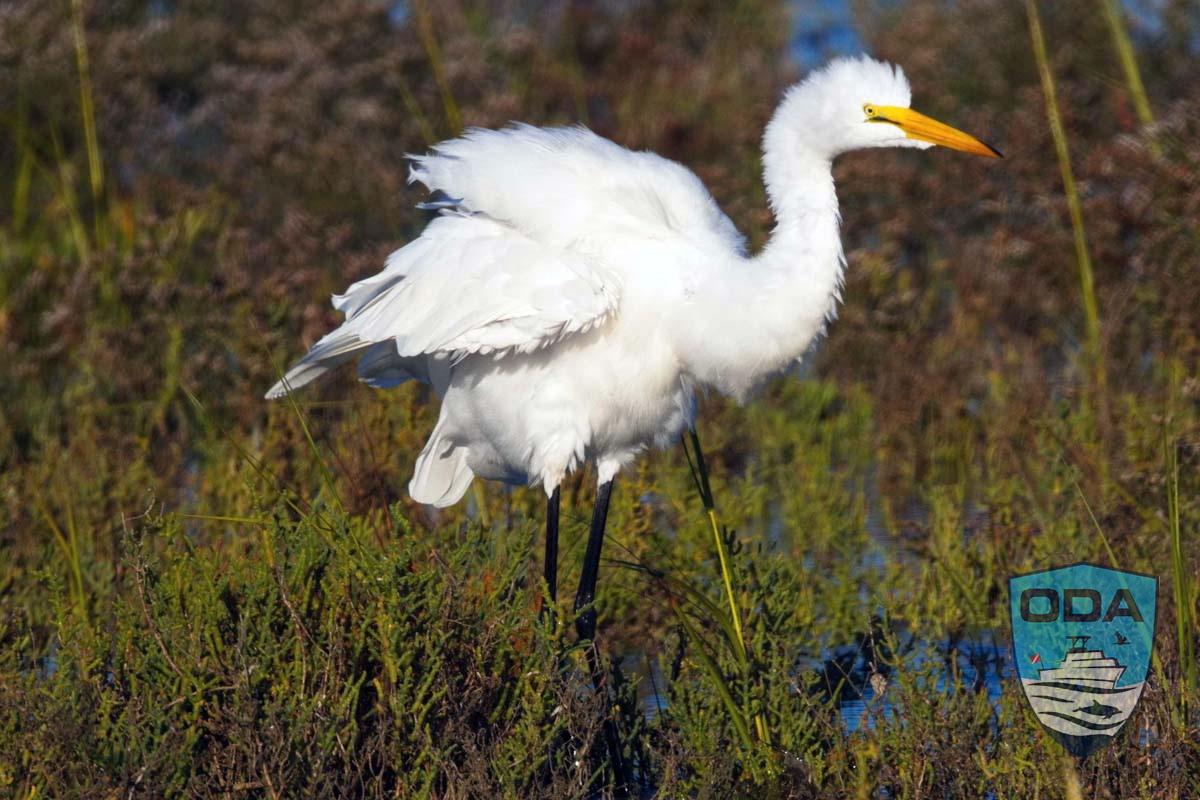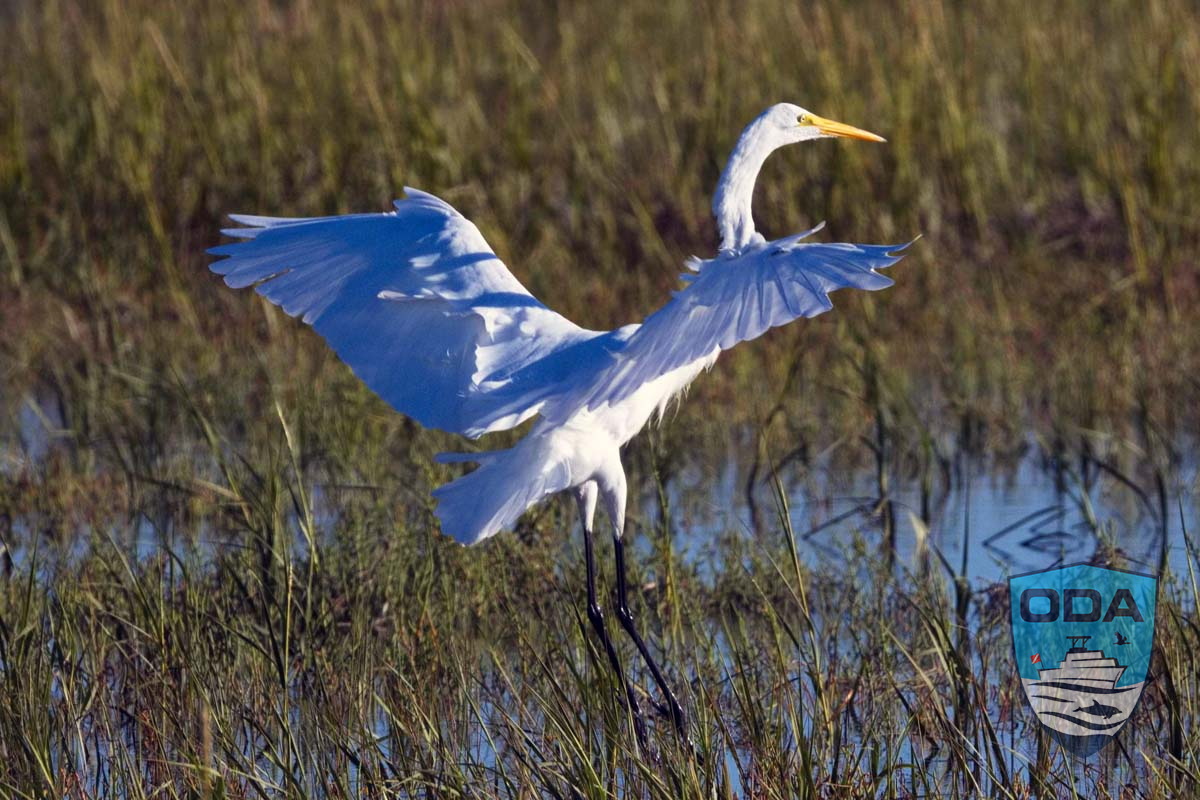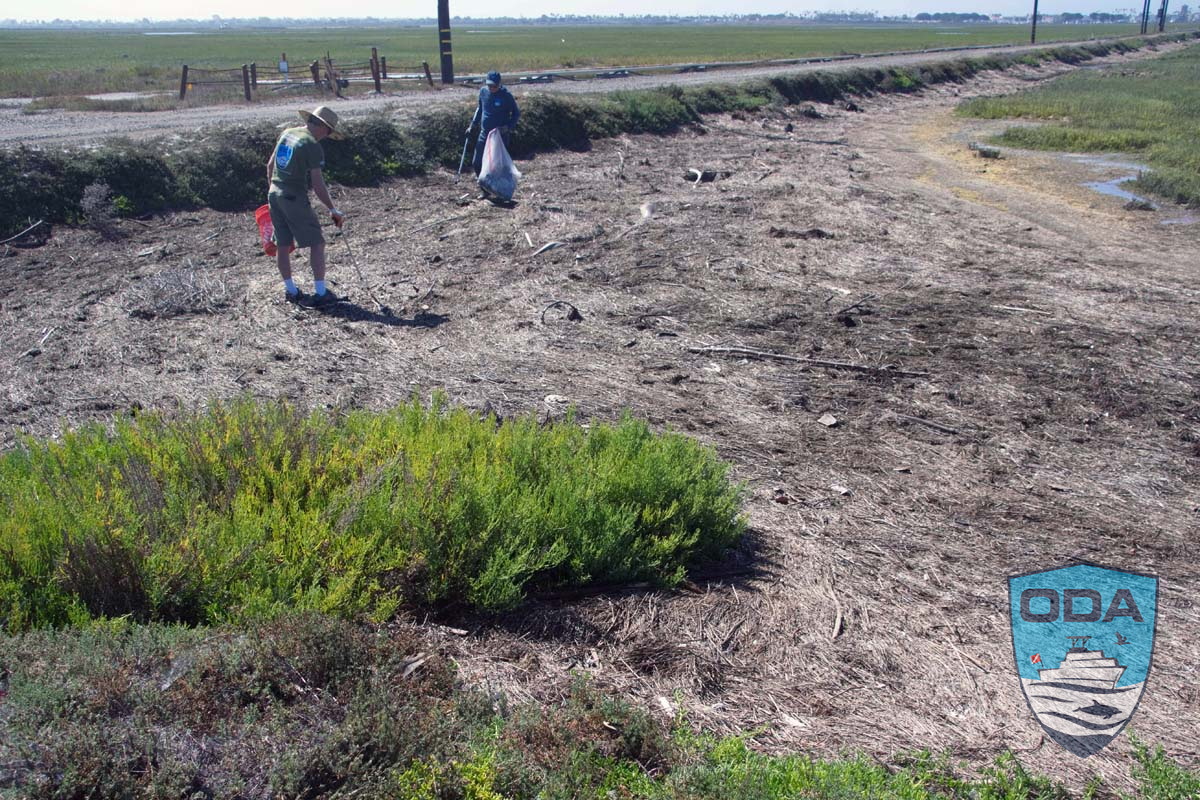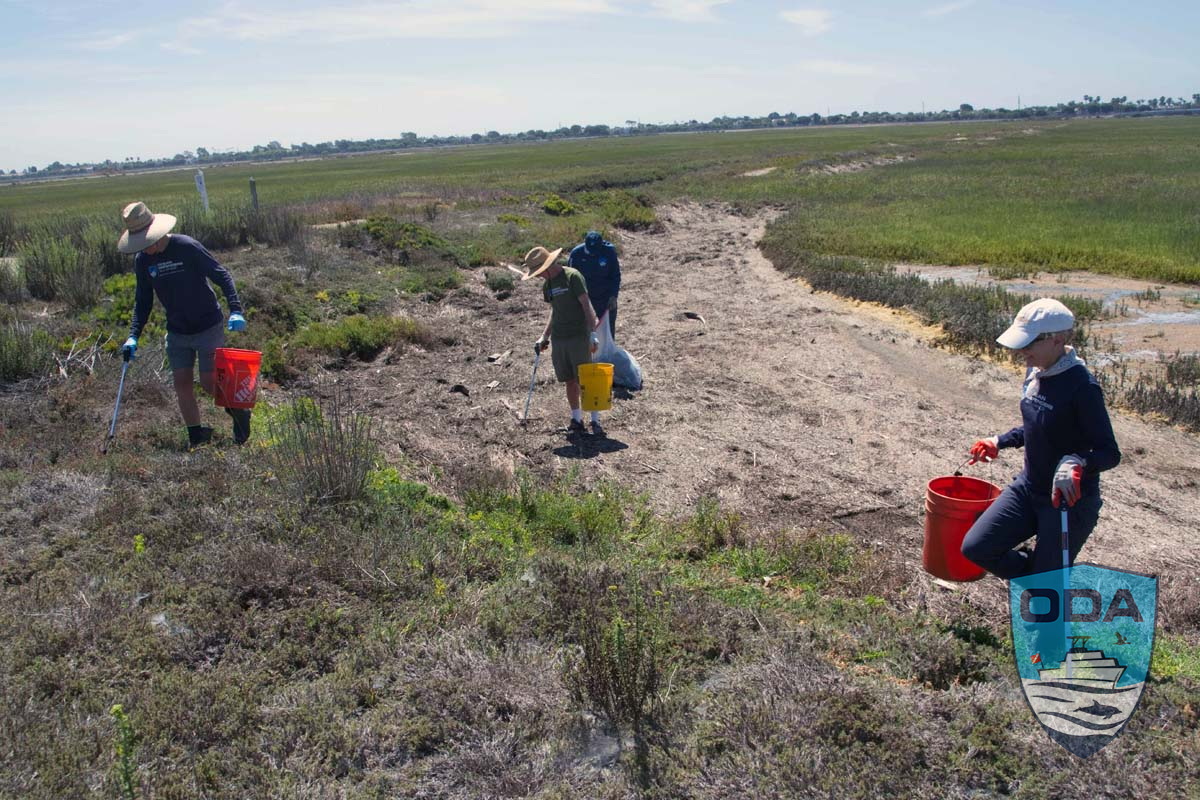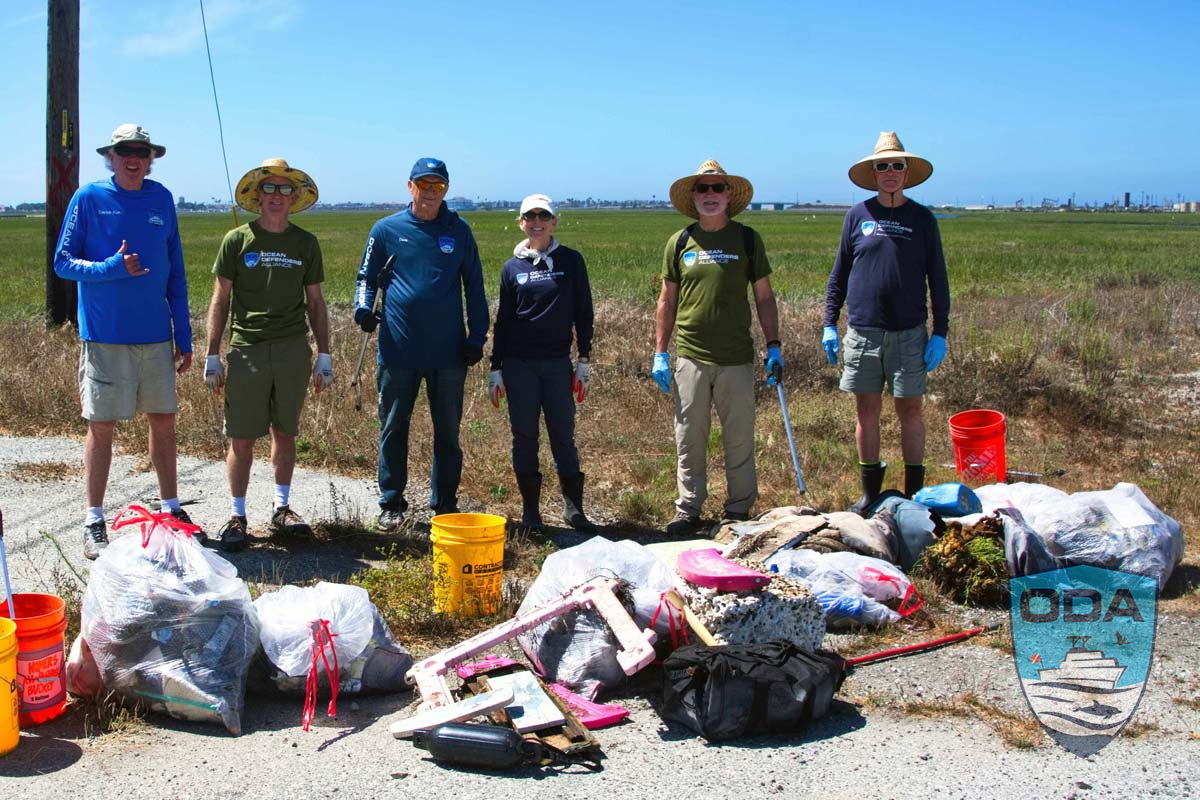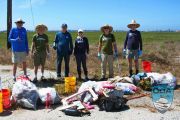By Founder and President Kurt Lieber
As ODA continues to do our best to pull a never-ending flow of plastics that float into the Seal Beach National Wildlife Refuge (SBNWR), a few stalwart volunteers and I were set to meet at the site at 9am on Wednesday August 20th.
I always arrive the day before and drive around the refuge searching for areas that have accumulated the most amount of trash. At the same time, I have my camera with me to take shots of any wildlife I might come across. This time I saw something I had never seen in these wetlands before, a sea lion. He was a long way from the ocean, he was moving around on the land just a few feet away from the water, and I sensed all was not well with him.
Keeping my distance so as not to disturb him, I took a few pictures and just spent time with him. He knew I was there and seemed to calm down in my presence. I only hung around for 10 minutes or so. Then I called the biologist for the SBNWR (Chloe) and told her what I saw. As it was getting late in the day she said she'd check it out in the morning.
When she got there, he had moved about 200 feet from the spot where I had seen him the night before but had crossed a road (lightly traveled) and was laying on pavement behind a building. She called the Pacific Marine Mammal Center (PMMC) in Laguna. They were there within an hour, assessed his condition, but sadly concluded that he was beyond help, and euthanized him. Their preliminary evaluation had them thinking that it was cancer, most likely caused by all the DDT out there. They see this a LOT. He should have weighed 450 to 500 but was only around 200.
I was depressed all day. But then I started thinking about all those volunteers from the PMMC, there were probably 8 of them on this project including the lead veterinarian. Cristina Robinson works for them and happened to be there for the evaluation; she’s also volunteered with ODA in the past. She called me on the phone a couple of hours later and told me more about the vet’s assessment.
When I told her I have no idea how they deal with the emotional toll it must take on them, she said this year was particularly bad because of all the animals suffering from domoic acid. I hadn't even thought of that. This made me realize, all those deaths we read about in the paper are just numbers on a page. It isn't until we see It first-hand that it resonates: THAT WAS A SOUL THAT JUST PASSED!
The most likely culprit for this animal’s demise was DDT poisoning. DDT was used up until the mid-70’s as a chemical solution to reduce insects like mosquitoes. When scientists discovered that it was also responsible for killing a wide range of wildlife, it was banned in this country in 1972.
Even though it hasn’t been available for use since then, it is a very long-lived toxin, in fact we don’t even know if it will ever dissipate. Turns out sea lions are particularly affected ty this toxin, and it creates a variety of forms of cancer. Fully 25% of the sea lions that are taken in by the marine mammal rehabilitation centers in southern California die of this cancer. Cancer is very rare in wild animals.
Per an article in the LA Times published last year, hundreds of tons of DDT were dumped into the Pacific, roughly halfway between the mainland and Catalina Island, in waters 3,000 feet deep.
A recent survey of the area revealed that there was a layer of DDT slightly buried under two and a half inches of sediment. But don’t think for a moment that it stays buried. Currents can kick it up and there are millions of animals that bury themselves in the sand to avoid predators. Those animals are then eaten by larger organisms which are then consumed by small fish that are then eaten by larger animals like dolphins, whales, sharks and sea lions.
Here is a report that was sent to us by Cristina Robinson of the PMMC:
On Wednesday, Team PMMC received a report of a sick and thin adult male sea lion in a very unusual location - lying on a concrete walkway over a mile away from the ocean at the Seal Beach Naval Weapons Station! Our rescue team was able to respond and successfully rescue this handsome boy, who we named “Torpedo”.
Sadly, upon examination, “Torpedo” was found to have multiple abnormalities by our veterinary team including signs of cancer as well as possible permanent brain damage from domoic acid toxin ingestion due to the harmful algae bloom event that occurred this year.
The cancer is something we see commonly in sea lions off our coast. In fact, California sea lions have the highest cancer rate of any wildlife species - a devastating legacy of DDT pollution caused by barrels of toxic waste dumped off the Southern California coast between the 1940s and 1970s.
We also suspect that “Torpedo” was affected by the domoic acid algal bloom earlier this year. His thin body condition and abnormal stranding location suggest that this toxin, which can cause permanent brain damage, impacted his ability to forage and navigate his environment - which may have played a role in his detour inland.
Given the severity of his symptoms, the kindest decision was to elect humane euthanasia to end his suffering. While it’s never the outcome we hope for, we are grateful to have eased “Torpedo’s” pain. A full necropsy (animal autopsy) has been performed, and we’re now awaiting histopathology results due to the numerous abnormal findings.
We also want to send a shoutout to Ocean Defenders Alliance, who happened to be on base that same day conducting a cleanup of the nearby wetlands. We are so grateful for organizations working to keep our oceans clean and safe for marine life. Rescues like these wouldn’t be possible without the help of our partners and community. A huge thank you to the staff at the Seal Beach Naval Weapons Station for reporting "Torpedo" and keeping a watchful eye on him until we arrived.
While there is seemingly nothing we can do about DDT and domoic acid, there is something we can do about another human caused epidemic: plastic pollution.
After some somber moments, we grabbed our tools and waded into the wetlands to do our best to get rid of all the plastics that accumulate with each incoming tide.
It was our usual crew: Dennis Arp, Dave and Jean Merrill, Kent Morris, and Blake Storie. While Blake has been volunteering with ODA for decades, he has recently retired, and we hope to see him more often in the future!
We were running behind schedule and didn’t really get to work until 9:30. But we made great progress for the next 2-and-a-half hours.
In all, I estimate that we removed about 400 pounds of stuff, 90% of it plastic in one form or another.
It’s always rewarding seeing what a difference just a few people can make on these vital cleanups. Hope to see some new faces, as well as the usuals, on the next one.
We are spurred on to do even more, knowing precious wildlife like Torpedo pass through the wetlands. Even though this was his last sunset, he will NOT be forgotten!
If you’re in Southern California, we’d love to have you join us. Please reach out to us volunteer@oceandefenders.org


